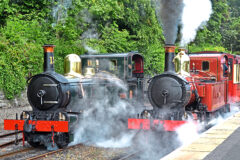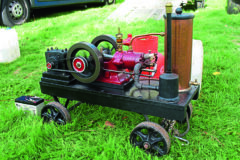1960s Caterpillar earthmovers

Posted by Chris Graham on 3rd April 2023
Keith Haddock reports on how the Caterpillar earthmovers product line was expanded with wheel loaders, back in the 1960s.
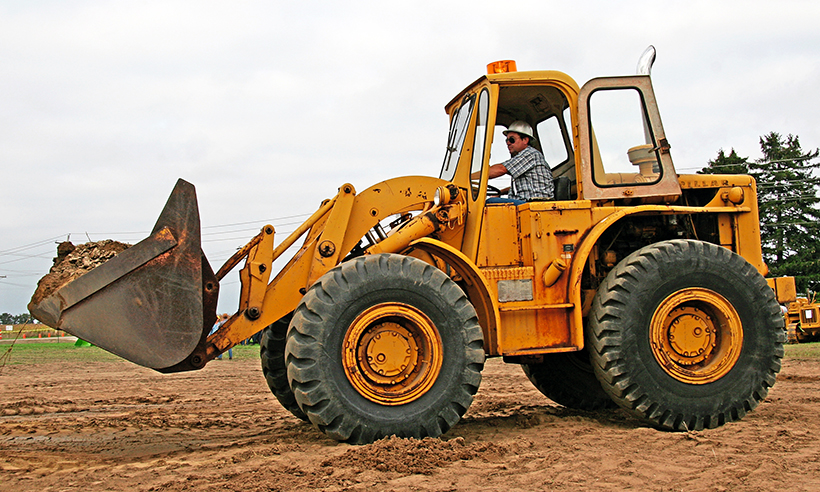
Unveiled in 1959, the 944A was Caterpillar’s first wheel loader.
When the Holt Manufacturing Company and the CL Best Tractor Company merged in 1925, Caterpillar Tractor Company was founded. The combination of these two well-established companies resulted in a line of crawler tractors, the success of which is legendary, and a line against which all others were measured.
During the ‘roaring twenties’ Caterpillar not only added new models to its tractor line, but also began to look for additional products to satisfy customers in different industries such as earthmoving and heavy construction. This change in focus from its traditional agricultural markets resulted in the purchase of the Russell Grader Manufacturing Company in 1928. This provided Caterpillar with a successful range of motor graders, both self-propelled and pull-types. In the late 1920s Caterpillar further strengthened its profile by developing its own diesel engine, first offered in its crawler tractors in 1931. The diesel engine became one of the most successful of all Caterpillar’s products as it not only provided power for its own products, it also supplied engines to many other manufacturers.
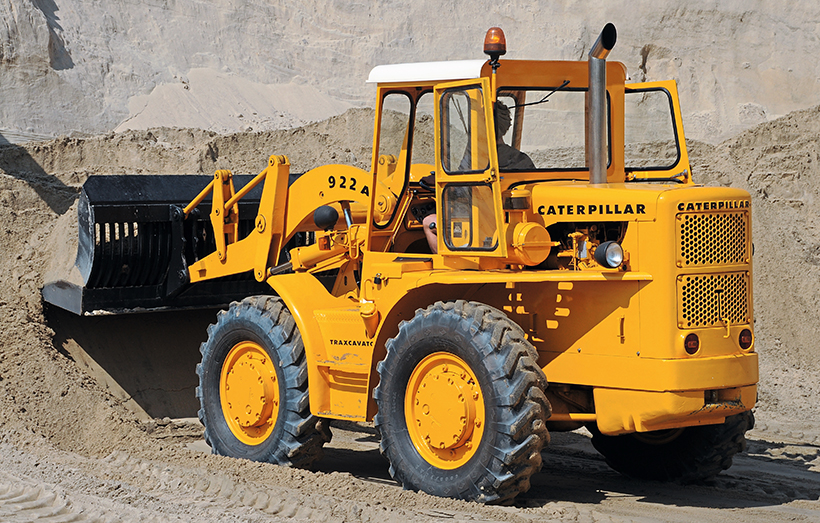
The 922A was the smallest of Caterpillar’s first range of three wheel loaders in 1960. (Pic: Urs Peyer)
Caterpillar provided multiple thousands of crawler tractors during World War II, then after the war began to add new products to its repertoire. In 1946 a range of pull-type scrapers appeared, the first of which was pulled by Caterpillar’s first wheeled tractor, the DW-10. The ‘DW’ series of scrapers expanded in 1951 when the famous DW-21 (Two-wheeled tractor) and DW-20 (Four-wheeled tractor) were announced with 15 to 18 cubic yards struck capacity. That same year Caterpillar launched a range of crawler loaders following purchase of the Trackson Company. This company had been building loader attachments for mounting on Caterpillar tractors since 1937.
Caterpillar’s first wheel loaders
Caterpillar entered the wheel loader market in 1959 with the introduction of the 944A. It was fitted with a standard bucket of two cubic yards and a 100hp engine. The following year the 922A (1¾-yard, 80hp) and the 966A (2¾-yard, 140hp) were added. These three loaders, wholly designed by Caterpillar, were at the cutting edge of loader technology. Their loader mechanism was entirely hydraulic with bucket crowding capability. They featured four-wheel-drive with power shift transmission, torque converter and ‘walk through’ unobstructed operator’s compartment. This was a huge improvement over some competitor models whose loader arms, pivoted behind the operator, obstructed vision and access when raised.
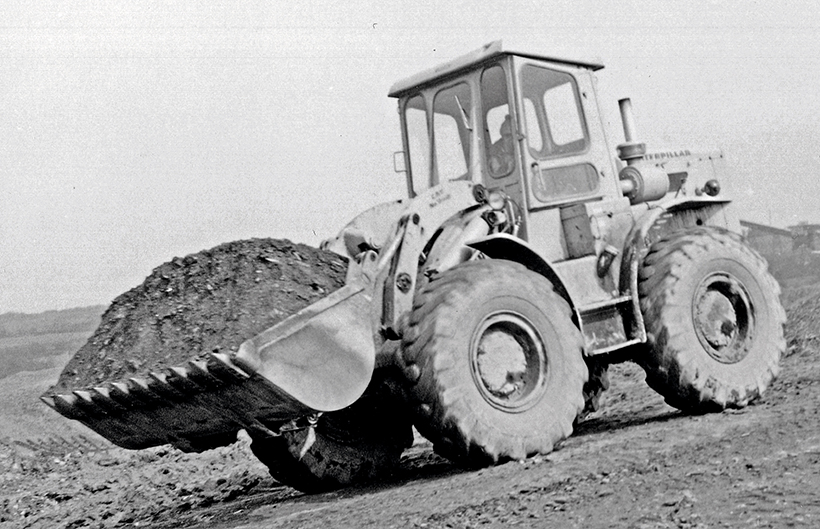
The 966A was the largest of Caterpillar’s first range of wheel loaders.
Although wheel loaders had appeared in the 1920s, early machines were adapted from small agricultural-type tractors and fitted with loader buckets, designed only for rehandling light materials. Their buckets were hoisted by wire ropes via a clutch-operated winch, and dumped by gravity through a trip-release mechanism. Caterpillar’s entry into the wheel loader market was perfectly timed, as during the 1950s wheel loaders were progressing into more robust machines, suited not only for rehandling work, but also for heavy earthmoving assignments. Because of their greater capabilities and superior mobility, wheel loaders have become one of the most popular types of machines on construction sites, in sand and gravel pits, and in surface mines. With the exception of large electric mining shovels, wheel loaders have taken over the work previously done by crawler-mounted cable shovels.
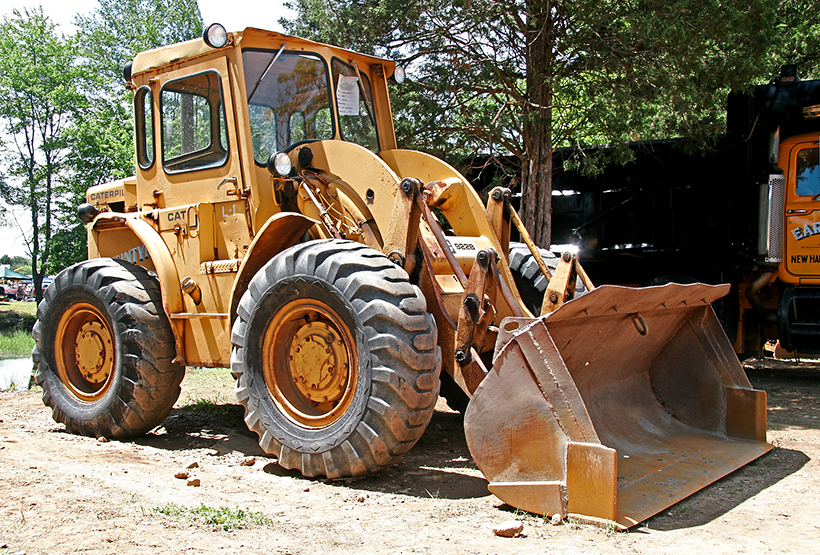
The 922B replaced the 922A in 1962, the last of Caterpillar’s rigid-frame wheel loaders.
In 1962, Caterpillar upgraded the 922A to the 922B with increased bucket capacity to 1½ cubic yards. This model and the three earlier models, 922A, 944A and 966A, were the only rigid-frame loaders ever produced by Caterpillar. After these models, all Caterpillar loaders boasted articulated-frame steering, one of the first manufacturers to do so. Actually Matbro in the UK claimed to have pioneered the world’s first articulated loader in 1957, and subsequently licensed its patents to Caterpillar, Hough and International Harvester.
Caterpillar 966 loader
Caterpillar introduced the 966B in 1963. Upgraded and totally redesigned from the 966, it was Caterpillar’s first articulated-frame wheel loader. The D333 engine was carried over from the former model but power was increased to 150 flywheel horsepower and the standard bucket to 3 cubic yards.

The first Caterpillar wheel loader with articulated frame steering was the 966B in 1963. It incorporated patents used under license from Matbro in the UK.
The rigid-frame 922B and 944 loaders were dropped from the line in 1968, and that same year Caterpillar replaced the 966B with the 966C with standard bucket capacity boosted to 3½ cubic yards. The D333 engine was retained but uprated to 170 flywheel horsepower. Powershift transmission was controlled by a single twist-grip lever on the driver’s steering column providing four speeds forward and four speeds in reverse. By 1971, the 966C was offered with a new Caterpillar 3306 engine of the same power rating but standard bucket capacity was boosted to 4 cubic yards.
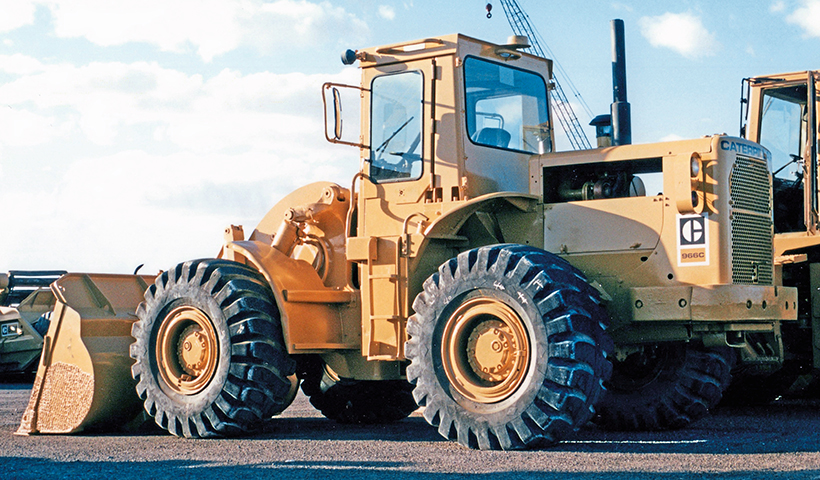
In 1968, the 966C replaced the 966B with the standard bucket boosted to 3½ cubic yards. It remained current for 12 years.
The 966D appeared in 1980 advertised as up to 35% more productive than the 966C, and with operating weight some five tons heavier at 22 tons. Bucket rating was up to 4¼ cubic yards and the same 3306 engine now rated at 200 flywheel horsepower. Pilot-operated controls reducing driver effort, improved visibility from the cab, and easier servicing from grouped lube areas all contributed to this increased productivity. In addition, the loader linkage was redesigned with more reach and dump clearance to make topping out high-sided lorries easier.

The 966D appeared in 1980 with a further increase in power and standard bucket capacity to 4¼ cubic yards.
The 966E arrived on the scene in 1987, a more productive and heavier loader. Rated capacity was upped to 5 cubic yards, and the turbocharged 3306 diesel engine was further uprated to 216 flywheel horsepower. Even more attention was paid to ease of servicing and driver comfort, with controls and instruments placed in optimum positions in the cab. An electronic monitoring system displayed important machine functions and, in conjunction with the standard gauge package, informed the driver of the location and severity of any problem.
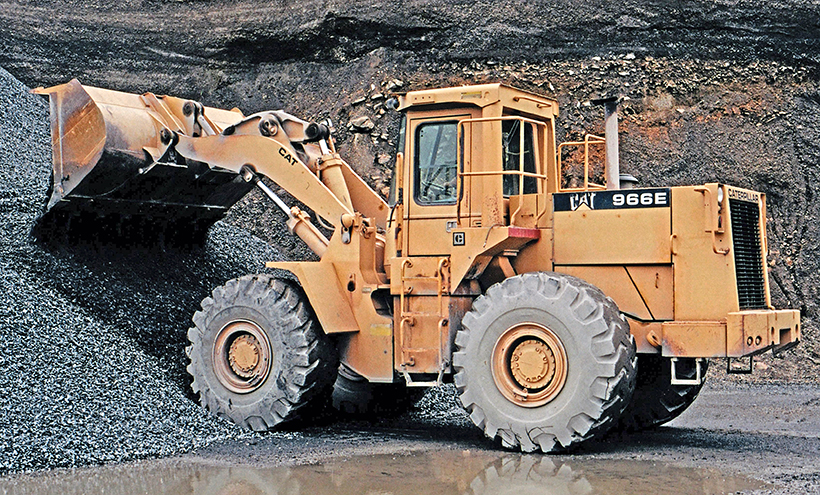
The 966E arrived on the scene in 1987 with increased weight and bucket capacity upped to 5 cubic yards.
In 1990, Caterpillar advanced further with the introduction of the 966F. More power was again allotted to the old-faithful 966, but the 220 flywheel horsepower came from the same 3306 turbocharged diesel as in the former model. According to Caterpillar literature, the power increase combined with a slight increase in weight provided 7% more breakout force than the 966E. Other standard and optional features of the ‘F’ series included a redesigned cab, a new computerised monitoring system, a multi-row modular-designed radiator with swing-out grill, adjustment-free wet disc brakes, and a newly-designed axle with 30% fewer components. Three years later, the 966F became the Series II with a quieter and roomier cab, repositioned controls, and an improved computerised monitoring system. Engine power and rated bucket capacity of 5 cubic yards remained the same.
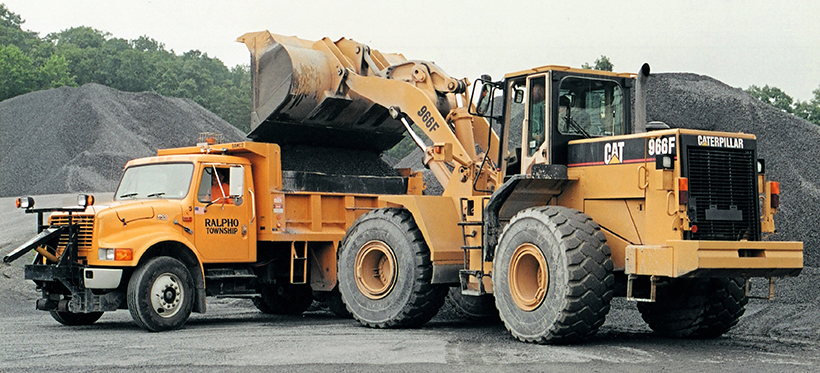
In 1990 Caterpillar advanced further with the 966F loader, now with engine power to 220 flywheel horsepower.
With all the improvements over the years, many believed the 966 loader could not be improved any more, but Caterpillar thought differently. They put the venerable loader through a major redesign process, outfitted it with latest technology, and in 1968 announced the 966G. With rated bucket capacity nudged up to 5¼ cubic yards, the new machine also gained power to 235 flywheel horsepower from its Caterpillar 3306 DITA engine. The external appearance was completely modernised with a rear-sloping curved engine compartment, and the driver’s cab ergonomically engineered using virtual reality technology. Electronic control was extended to several areas of the machine including the automatic powershift transmission and the clutch. he latter incorporated a sensing device to modulate pressure on the clutch for smooth shifting.
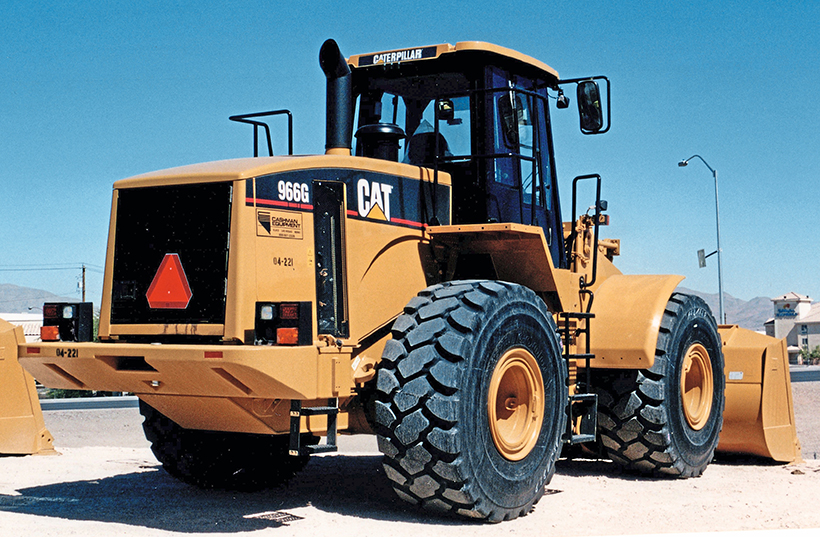
Introduced in 1998, the 966G heralded advanced technology with electronic control. Its rear-sloping engine compartment gave the loader its modern appearance.
The 966G known as the Series II was announced in 2001 with a 5½ cubic yard standard bucket. After many previous upgrades utilising the same basic engine, Caterpillar finally gave the 966G II a new one. Its 246-horsepower Caterpillar 3176C engine was electronically-controlled and met all world-wide emission regulations at that time. The cleaner, quieter engine was matched with an electronically-controlled, on-demand fan and a new cooling package with increased fuel efficiency. Other updates included an enhanced bucket linkage geometry providing greater working range and breakout force. In 2005 the 966H replaced the 966G-Series II retaining the same 5½ cubic yard standard bucket capacity but increasing horsepower to 287.
Up to 2011, when the 966H was replaced by the 966K, the ‘old faithful’ 966 model designation held the distinction of progressing from the original Series A in 1960 through B, C, D, E, F, G and H-Series upgrades, the only Caterpillar loader to enjoy such distinction!
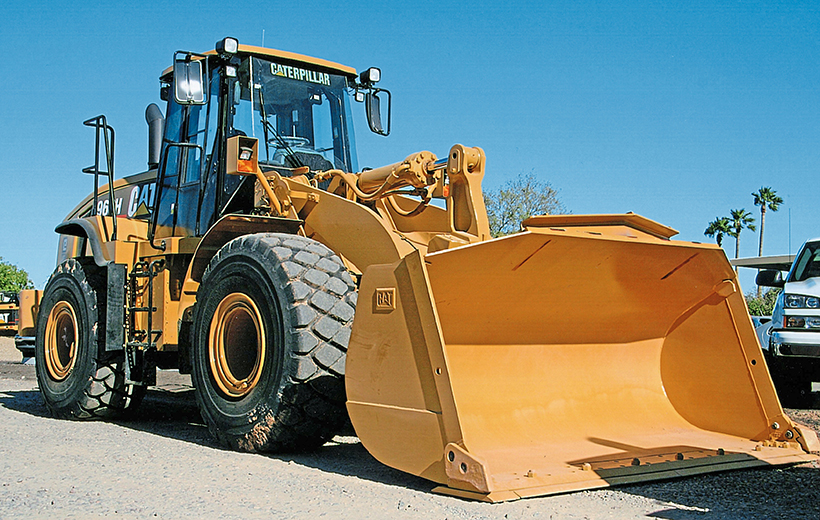
The 966H replaced the 966G in 2005.
Caterpillar’s 966 loader designation still continues with three models from which to choose. The current standard model has no suffix letter and comes fully loaded with supreme operator comfort and latest technology controls. The 966XE is designed for heavy duty work with higher engine power, heavier transmission and capable of faster cycle times. The 966GC is a basic, scaled-down version with less options and, according to Caterpillar, more competitive with other loaders on the market.
This feature comes from the latest issue of Old Glory, and you can get a money-saving subscription to this magazine simply by clicking HERE



